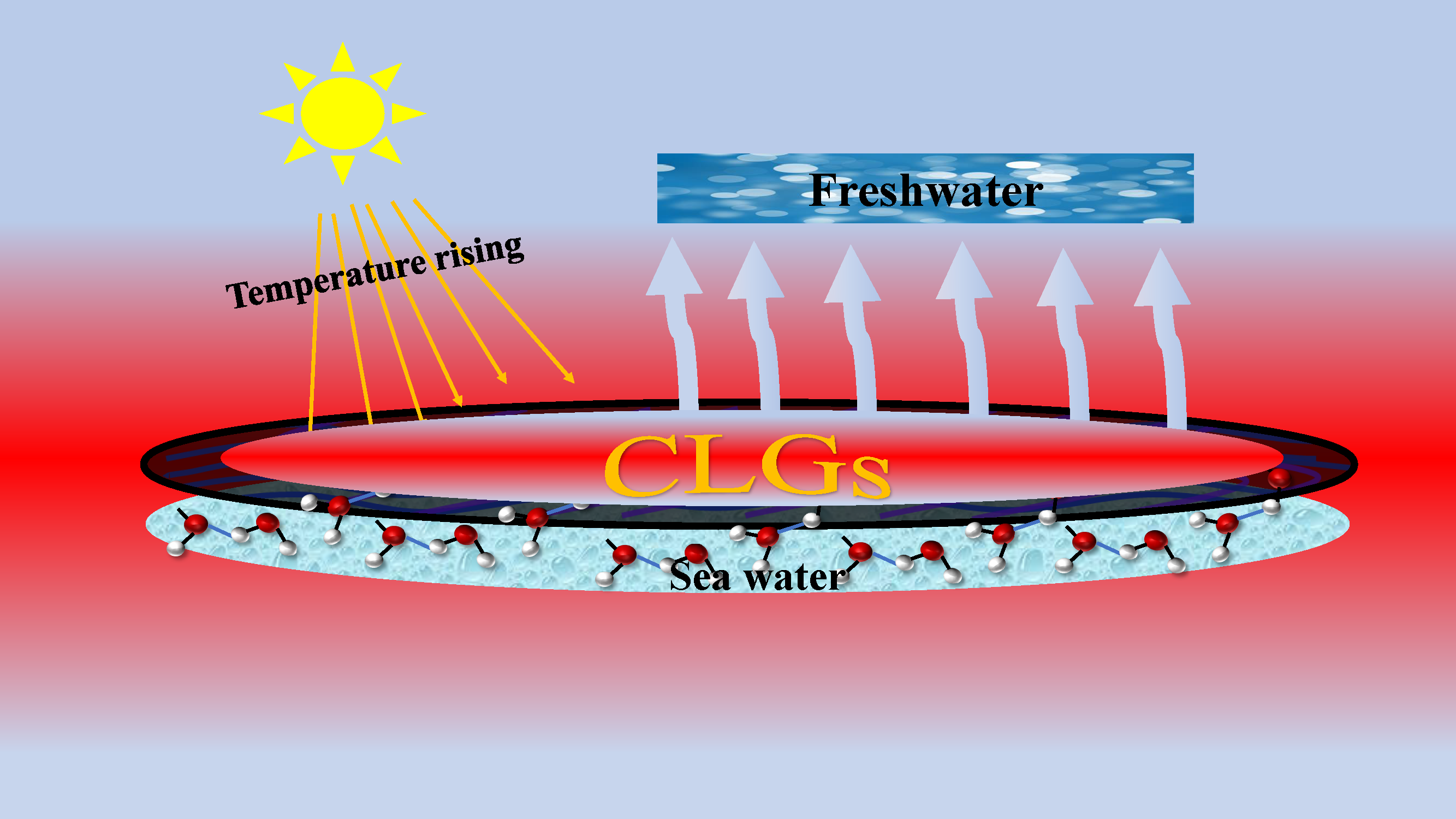The above characterization demonstrates that CLGs own uniform internal channels, superior water transport capacity, excellent light absorption capacity and low thermal conductivity, which can provide effective photothermal evaporation foundation for desalination. Photothermal evaporation experiments of the CLGs under different conditions are illustrated in Fig.8. The photothermal evaporation performance of the CLGs with varying lignin concentrations was measured under 1 sun irradiation (Fig.8(a)). The evaporation rates of the CLG1, CLG2, CLG3, CLG4, and CLG5 are 1.83, 1.93, 2.33, 2.55, and 2.46 kg·m
–2·h
–1, respectively, indicating that the surface temperature of the CLGs rises rapidly under sunlight irradiation and possess excellent photothermal conversion capability. In addition, extraordinarily hydrophilic and rich pore structures can continually transport water to the interface of the evaporator and allow vapor to escape through these pores [
49]. Temperature change profiles (Fig.8(b)) and infrared images (Fig.8(c)) of the CLGs were recorded using an infrared camera. The surface temperature of the CLG1, CLG2, CLG3, CLG4, and CLG5 rapidly warmed up to 33.0, 32.5, 33.4, 35.7 and 36.1 °C within 1 min. After 10 min, the temperature was elevated to 36.8, 38.2, 39.3, 40.3 and 43.8 °C, and reached equilibrium at 30 min. Due to the photothermal ability of the lignin, its higher content can improve the photothermal capacity of the hydrogel and rise the surface temperature of the evaporator. The solar evaporation rate and efficiency of the CLGs are shown in Fig.9. The highest evaporation rate was found on the CLG4 (2.55 kg·m
–2·h
–1), which is 4.4 times higher than water (0.53 kg·m
–2·h
–1). The calculated result shows that the solar evaporation efficiency of CLG1–CLG5 is 75.1%, 81.2%, 89.7%, 92.1% and 84.9%, respectively (Fig.9(a)). The increase in lignin content enhances the photothermal conversion performance of the CLGs, the thermal energy absorbed by the CLGs is more concentrated for photothermal evaporation, and the water evaporation rate is improved. Although the highest surface temperature (46.8 °C) of the CLG5 can be attained after 60 min, the water transport performance declined compared to the CLG4, and it might not timely and effectively carry out the evaporation process. The comparison of evaporation performance of CLG4 and previous work is summarized in Tab.1, suggesting that the synthesized CLG4 is a competitive photothermal evaporator. The interfacial evaporation performance of the CLG4 under various light-intensity situations was investigated (Fig.9(b)). It is found that brighter light could bring quicker evaporation rates. The water evaporation rates of the CLG4 were 4.21 and 5.37 kg·m
–2·h
–1 under 2 and 3 suns, respectively. Cycling tests were conducted on the materials to establish the potential application capability of the CLG4 (Fig.9(c)). Given the stable photothermal conversion ability of the GO within the hydrogels, as well as the excellent water transport performance of the CLG4, the water evaporation rate of the hydrogel is in the range of 2.45–2.59 kg·m
–2·h
–1 in five cycles, and the apparent shape of the material did not change significantly, which indicated the excellent stability of the evaporator. Artificial seawater was employed to investigate the potentially practical application of the CLG4 in the real desalination process, and the water vapor produced during the evaporation process is collected in a simple distillation device (Fig. S3, cf. ESM). The concentrations of cations (Na
+, K
+, Ca
2+ and Mg
2+) before and after evaporation can be seen in Fig.9(d) and Table S4 (cf. ESM). The removal ratio of the cations in the water is greatly increased to over 99% after evaporation, meeting the criterion of the human drinking water [
50].












